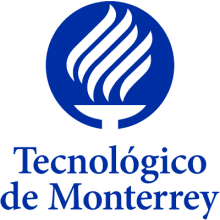Browse the full results of the Latin America University Rankings 2017
Higher education in Latin America has reached a pivotal moment.
Its expansion in recent years has been extraordinary. While the participation of 18- to 24-year-olds in higher education programmes in the region increased from 17 per cent in 1991 to 21 per cent in 2000, it shot up to 40 per cent between 2000 and 2010. In that dynamic decade, about 2,300 new institutions opened in the region – many in the private sector – and 30,000 new study programmes were created, according to the World Bank. The expansion has brought great benefits – improving equality in the region and supporting economic growth.
But the dramatic rises in participation have, in the main, not been matched by the necessary improvements in quality: too many students drop out or graduate late; regulation is too lax; teaching methods are outdated; graduates’ skills do not meet the needs of a rapidly developing economy; and too few institutions make it into the Times Higher Education World University Rankings.
“At this crossroads, Latin America and the Caribbean faces an opportunity not to be missed,” the World Bank concluded in a May 2017 report, At a Crossroads: Higher Education in Latin America and the Caribbean. With more quality, more information for students, better regulation and greater accountability, the World Bank said, higher education in the region could fulfil its role in providing skilled labour and building the capacity to generate knowledge and innovation, boosting productivity and economic growth.
Download a copy of the Latin America University Rankings 2017 digital supplement
This is where, we humbly suggest, Times Higher Education can play a crucial supporting role.
The THE Latin America University Rankings will, over time, provide the data that will help policymakers to monitor the regional and global strength of their higher education systems. They will enable university leaders to properly benchmark their institutions’ performance: across a wide range of metrics, universities can compare themselves with their local and global peers using the common data definitions and rigorous standards that THE employs in all its rankings – an exercise that can provide a clear strategic framework for improvement. This is essential for the region’s leading research institutions, which cannot afford to get left behind in the highly competitive global knowledge economy. The rankings, integrated with THE’s World University Rankings, will also drive up the profile of Latin American institutions worldwide and help them to attract new global partners.
They will bring greater transparency and accountability to the sector, providing essential information for students and their families attempting to navigate a complex and highly diverse higher education system and making a potentially life-changing decision – who to trust with their education.
But the THE rankings in Latin America are, like the universities, also at a pivotal moment. This is the second annual edition of the rankings, and after ranking only 50 institutions last year, we this year rank just over 80 institutions. THE ’s commitment to true partnership with all the institutions that we rank, including a requirement that institutions voluntarily sign up to the rankings and share basic institutional data, means that progress in developing a bespoke Latin America ranking has been modest. True partnership means painstaking relationship-building and trust-building.
THE will use these rankings, launched with a special data masterclass at Mexico’s University of Guadalajara, to deepen our engagement with Latin American universities and to ensure that we deliver the data and analytics that the sector needs to support the next stage of its exciting development.
Countries represented in the Latin America University Rankings
| Country | Institutions in top 71+ | Top institution | Rank |
| Brazil | 32 | State University of Campinas | 1 |
| Chile | 17 | Pontifical Catholic University of Chile | 3 |
| Mexico | 13 | Monterrey Institute of Technology and Higher Education | 6 |
| Colombia | 11 | University of the Andes | 5 |
| Venezuela | 3 | Simón Bolívar University | 26–30 |
| Argentina | 2 | National University of Córdoba | 26–30 |
| Ecuador | 2 | University of San Francisco, Quito | 41–45 |
| Costa Rica | 1 | University of Costa Rica | 41–45 |
Footnote: In February 2018, Times Higher Education updated the 2017 Latin America University Rankings to include the previously excluded University of the Andes, Chile. Details of the change are here.
Register to continue
Why register?
- Registration is free and only takes a moment
- Once registered, you can read 3 articles a month
- Sign up for our newsletter
Subscribe
Or subscribe for unlimited access to:
- Unlimited access to news, views, insights & reviews
- Digital editions
- Digital access to THE’s university and college rankings analysis
Already registered or a current subscriber? Login










